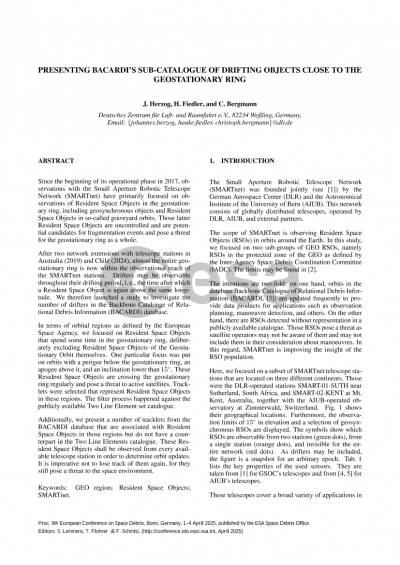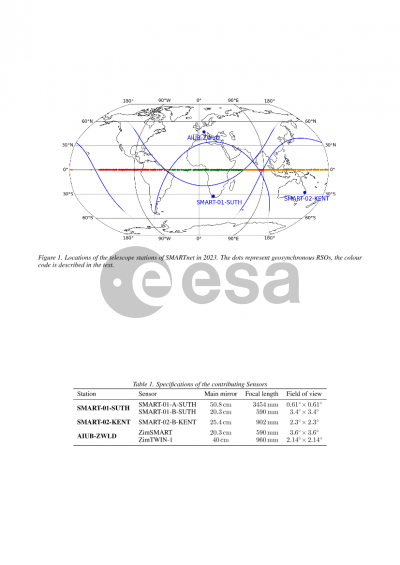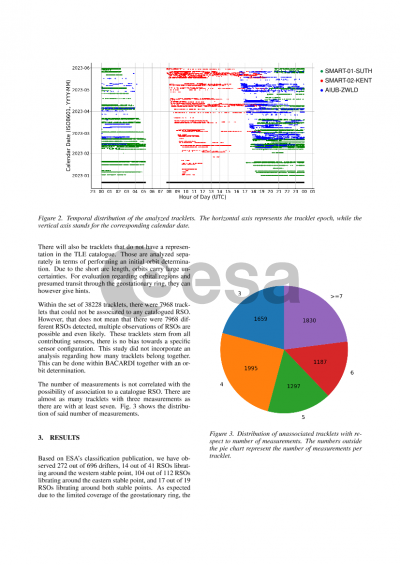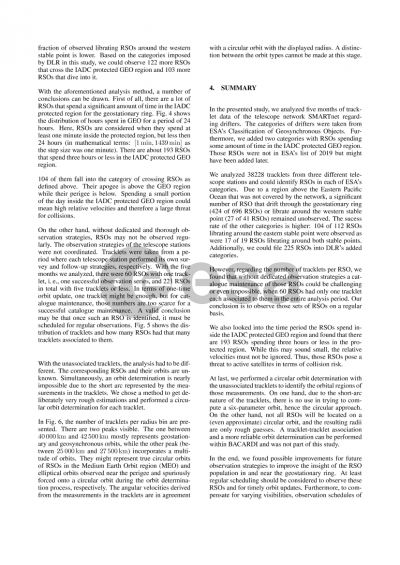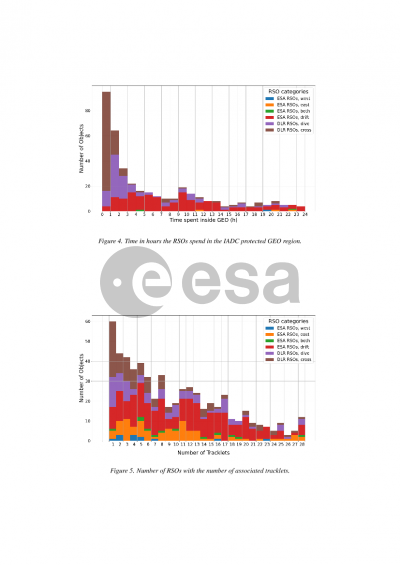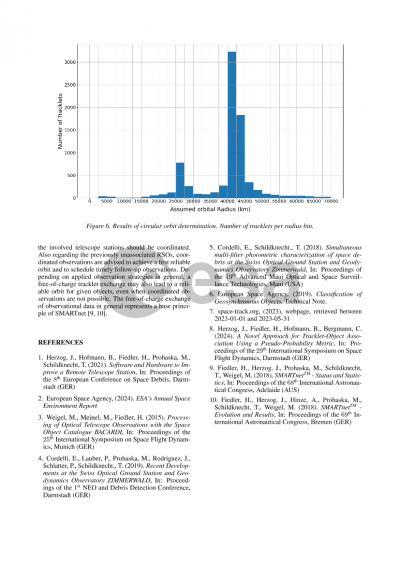Document details

Abstract
Since the beginning of its operational phase in 2017, observations with the SMARTnet telescope network have primarily focused on observations of Resident Space Objects (RSOs) in the geostationary ring, including geosynchronous objects and RSOs in so-called graveyard orbits. Those latter RSOs are uncontrolled and are potential candidates for fragmentation events and pose a threat for the geostationary ring as a whole.
After two network extensions with telescope stations in Australia (2019) and Chile (2024), almost the entire geostationary ring is now within the observational reach of the SMARTnet stations. Drifters may be observable throughout their libration period, i.e. the time after which an RSO is again above the same longitude. We therefore launched a study to investigate the number of drifters in the BACARDI database.
In terms of orbital regions, we focused on the Extended Geostationary Orbit (EGO), GEO-superGEO Crossing Orbit (GHO), MEO-GEO Crossing Orbit (MGO), and High Altitude Orbit (HAO), and the Geostationary Orbit (GEO). One particular focus was put on orbits with a perigee below the geostationary ring, an apogee above it, and an inclination lower than 15°. These RSOs are crossing the geostationary rings regularly and pose a threat to active satellites. Tracklets were selected which represent RSOs in these regions. The filter process happened against the publicly available TLE catalogue.
Additionally, we present a number of tracklets from the BACARDI database, which are associated with RSOs in those regions but do not have a counterpart in the TLE catalogue. These RSOs shall be observed from every available telescope station in order to determine orbit updates. It is imperative not to lose track of them again, for they still pose a threat to the space environment.
Preview
